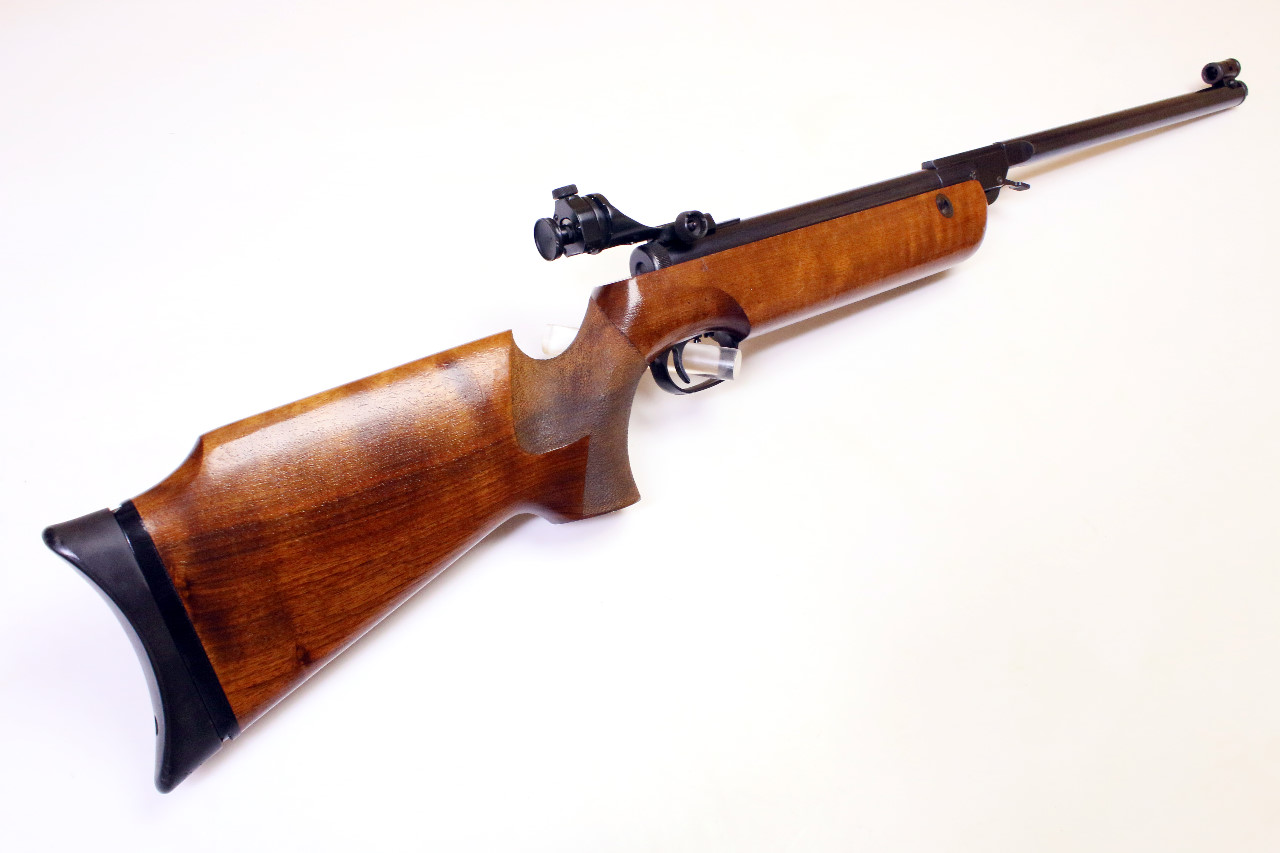Intressant info om Walther och andra tyska gamla matchvapen som jag hittade på internettet

Walther was founded in 1886, and made target rifles for the remainder of the nineteenth century.Following World War II, the firm was re-established in Ulm, German, located about 100 miles west ofMunich. One of its main competitors, Anschutz, is also located in Ulm.In 1951 Walthers came out with their first post-WWII air rifle, hence the LG51, followed by theLG53, and then the LG55. Walther models 51, 52, 53, and 55 were made in parallel during most oftheir production lives, all being break barrel springers.
The 51 was a simple open-sighted sporter withsmooth bore, 52 included bore, the 53 had a sporter
stock with improved trigger and match sights, the55 had the target
stock, an even finer trigger, and a lot of interesting options. The LG55 began production in 1955 running through 1967 (available through 1974) and was a trulydedicated 10-meter match air rifle. Somer believe Walther's produced the LG55 to compete in the first pro-WWII German National Championship - reportledWalther's build a very small number of special LG55 exclusely for the German National Team (something like six only).
The LG55 is a barrel-cocker withsimple chisel detent, heavy weight (yes, a lead chunk inside the fore end), 550
fps velocity, full match sights, and a superb adjustable match trigger. Wood isshaped in the classic rounded Olympia style, and was available in both beech and walnut. Tyrolean stocks were also available. The Walther LGV (Luft Gewehr Verbessert = "Improved Air Rifle") was introduced as a further refined rifle in 1963 replacing the LG55 as the flagshipmatch air rifle for the firm. The LGV was the ultimate development of the 53/55 series target springers, and incorporated the lever breech lock. It relied uponmass from a heavy barrel
sleeve and weight in the forestock to damp recoil. This boosted the weight to a pretty hefty 10.4 pounds. The LGV is a beautifullymade rifle.
The initial Olympia-stocked version was later followed by more angular Match and Junior variants. A Tyrolean version was available as well.Most styles were available in both beech and walnut. In 1968 Walthers introduced its ultimate match springer with the LGV Special (or in German, the LGV Spezial). The LGV Special has the leaded
stock likethe LGV, but added two short springs wound in opposite directions, an improved match
stock, an adjustable buttplate, and an even more refined adjustabletrigger (major difference from the LGV is an adjustment for length of pull). Many feel the LGV Special is almost Feinwerkbau 300S like in its firingbehavior, neatly eliminating the twist and most of the vibration of a single spring.
The first LGV Special had a rounded forestock, but in 1972 the squaredMatch version was introduced. According to John Walters The Airgun Book, [T]he LGV Spezial is the epitome of conventional air-rifle design, withminimal recoil, but is also very expensive. A few LGV-Spezial's were produced with Tyrolian stocks, which were soon to be oultlawed by the UIT (nowISSF) for use in 10 meter competition.Due to the nature of competition, and perhaps encouraged by all German target rifle manufacturers (Anschutz, Walther, Feinwerkbau, Diana) being locatedwithin the same region, technological advances in their match rifles came rapidly. Much attention was devoted to reduce or eliminate springer recoil. Anschutz introduced the advanced fixed-barrel model 220, with pneumatic recoil-suppressing brake, in 1960.
Their model 250, with an improved hydraulicbrake, followed in 1966. Diana introduced the first truly recoilless design, the break-barrel model 60 featuring the Giss double-piston system, in 1963. Morerefined Diana Giss rifles were the model 65 (1968), model 66 (1974), and the highly refined fixed-barrel model 75 in 1977. Feinwerkbau introduced themodel 150 in 1963, featuring a fixed barrel and a simple sledge-type recoil elimination system. Following were the improved models 300 (1969) and 300S(1972), the latter remaining in production for over 25 years. A modified version of the sledge system was borrowed for the last spring-piston match rifleto be introduced, the Anschutz 380 of 1980.
Walthers went in a different direction. Even while refining their LGV into the LGV Special series, they shocked the competition by introducing an entirelynew concept in 1974 -- the single stroke pneumatic LGR model. Immediately after its introduction, the LGR broke both the individual and team 10-meterworld records. This forced the international shooting union to reduce the size of the 10-meter air rifle target to where it remains today. The LGR also forcedall their match air rifle competitors to ultimately drop the springers and move into the pneumatic era. In 1984 Anschutz won the Olympic 10 meter womans metal with their LG380 --- the last springer to do so --- while the LGR won the Mens Gold.
In 1984Feinwerkbau introduced the first of the pneumatic
FWB 600 series, and by the late 1980s all of these builders with making single stroke pneumatics. E




